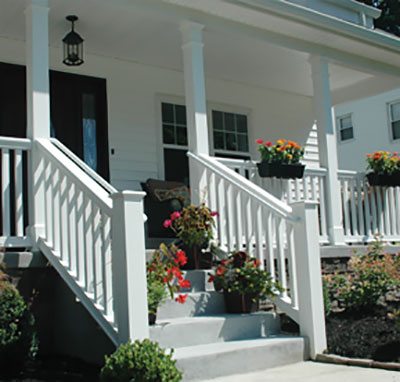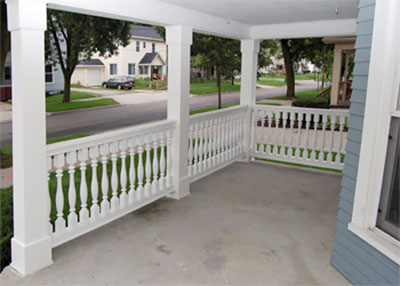.png)
.png)
Search By Square Foot
• Up to 1000 Sq Ft
• 1001 - 1500 Sq Ft
• 1501 - 2000 Sq Ft
• 2001 - 2500 Sq Ft
• 2501 - 3000 Sq Ft
• 3001 - 3500 Sq Ft
• 3501 - 4000 Sq Ft
• 4001 - 4500 Sq Ft
• 4501 - 5000 Sq Ft
• 5001 Sq Ft And Up
Search By Square Foot
• Up to 1000 Sq Ft
• 1001 - 1500 Sq Ft
• 1501 - 2000 Sq Ft
• 2001 - 2500 Sq Ft
• 2501 - 3000 Sq Ft
• 3001 - 3500 Sq Ft
• 3501 - 4000 Sq Ft
• 4001 - 4500 Sq Ft
• 4501 - 5000 Sq Ft
• 5001 Sq Ft And Up
by Rachel Lyon, Editorial Director for The House Designers®
If you have a front porch to design, be sure to complete it with fitting details to bring out its best and amp up the whole home’s curb appeal. The welcoming vibe will definitely get noticed, and the effort you put in might just repay in more interested buyers and a higher final sale price. Not sure where to start? Here are the major areas to keep in mind!

Trim on the House
Before you get too caught up with the porch, the house behind it should stand well on its own. A fantastic porch seen against a very plain or mismatched exterior will draw attention for the wrong reasons, so consider the trim around the front door and windows before working the design out. Does the thickness of the pieces match the style of the home, and will they be in balance with the other elements you have in mind? Look at the whole picture whether you’re adding a porch to an existing home or starting from scratch.
There are a few basic styles to consider. Flat trim is the simplest and looks great in wider thicknesses; it’s often chosen for Craftsman homes, ranches, and modest cottages. Decorated trim, which has various levels of grooving running lengthwise on the pieces, is suited to traditional, colonial, and most other types of architecture. With plenty of options available, you can compare their nuances to select the perfect one for each house. The addition of crossheads over the door and windows is a formal touch that many people appreciate as well; the same simple versus decorated rules apply, and you can opt for a keystone detail to create a focal point.

Railing Around the Perimeter
Porches without railing exist, but this feature definitely makes a statement and gives some homes charm that’s hard to acquire otherwise. Balusters—the individual posts lined up between the top and bottom rails—come in a huge range of styles, and each one has a history behind it. Back in the days when balusters were made by hand individually, building a porch was definitely a labor of love. Producing railing isn’t nearly as time consuming now, but it still shows that extra level of care put into an exterior design.
Balusters have been made of wood and stone, come very thick or thin, and can be plain or extremely ornate. Mediterranean, Southwestern, and some classical house styles favor thick stone looks while most other types of architecture use thinner ones carved from wood. In general, the more rustic the home, the simpler the balusters should be, but there is a little wiggle room if you need to give a simple house a point of interest or balance a busy façade. Once the railing is up, the atmosphere of the porch area will be completely changed, so make sure you’re confident in your selection before purchasing.

Columns to Complete the Look
Whether you have a railing system or not, you’ll surely need columns to support a covered porch, both structurally and visually. Wooden posts are usually used to fulfill the structural requirements, and that means they can be dressed up in a number of ways—perhaps a smooth, straight column for a minimalist design, or a tapered look with raised panels for an ornate bungalow. Column wraps can be painted to match the house or left white to stand out, but in any case, they are definitely an asset for curb appeal.
When it comes time to build a porch, check out Fypon’s® huge catalog, which includes everything you’ll need in lightweight synthetic pieces that won’t warp, split, rot, or fall prey to insects. Homeowners love the beauty, choices, and low maintenance, and contractors appreciate that all the finishing touches of the porch can be installed in a day. If you’re in any doubt, contact their free Takeoff Service or find a local dealer for assistance!